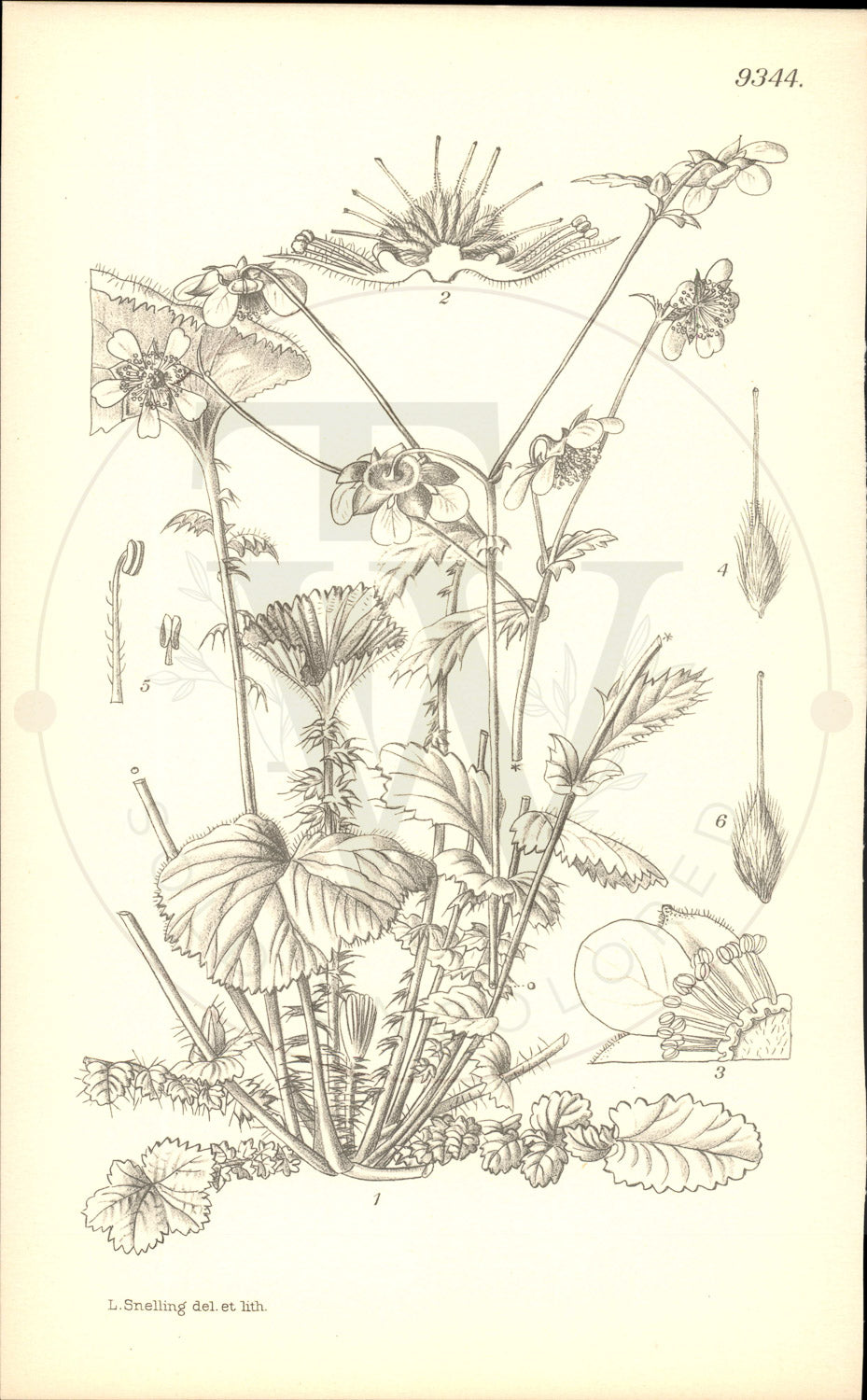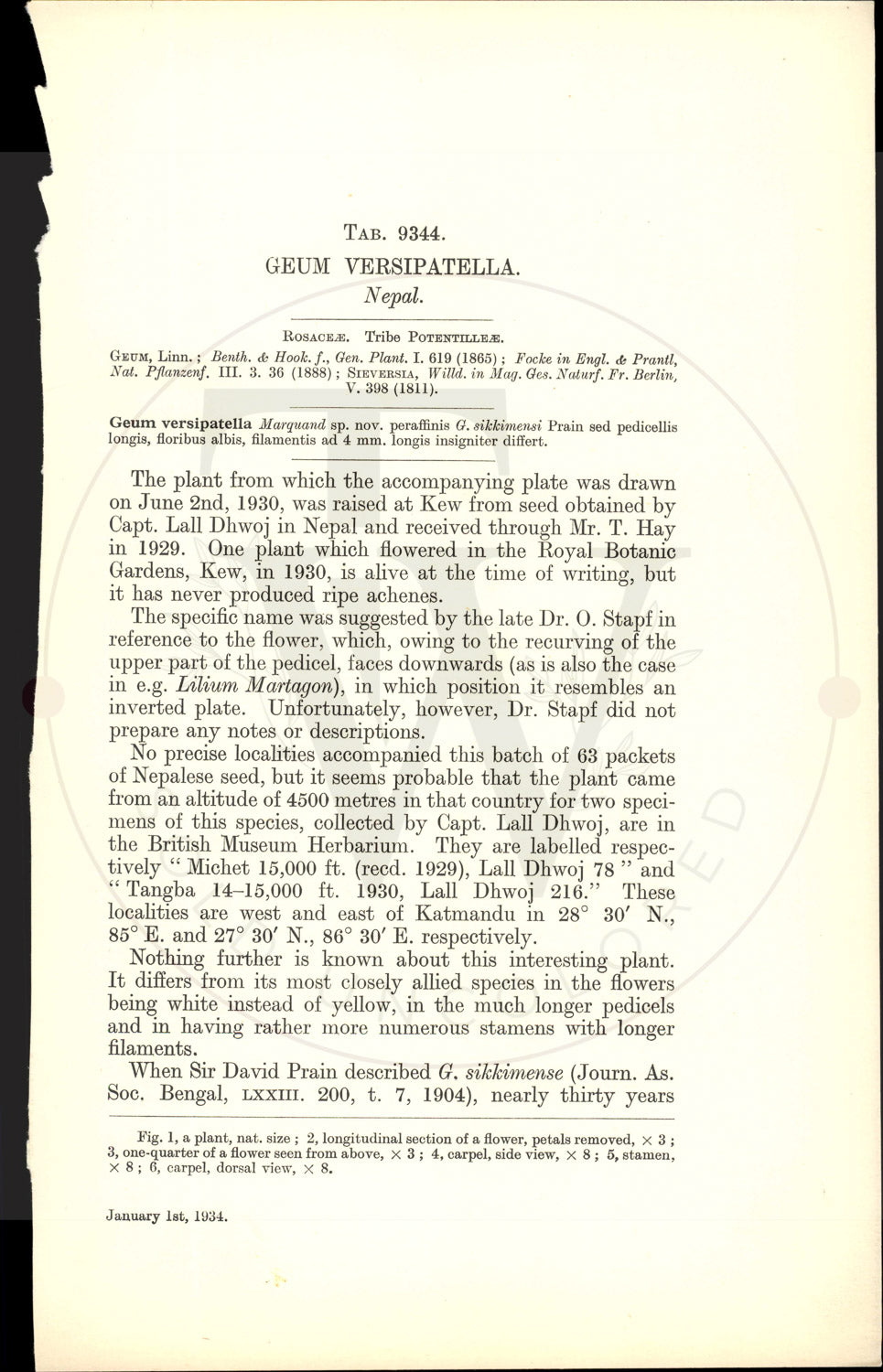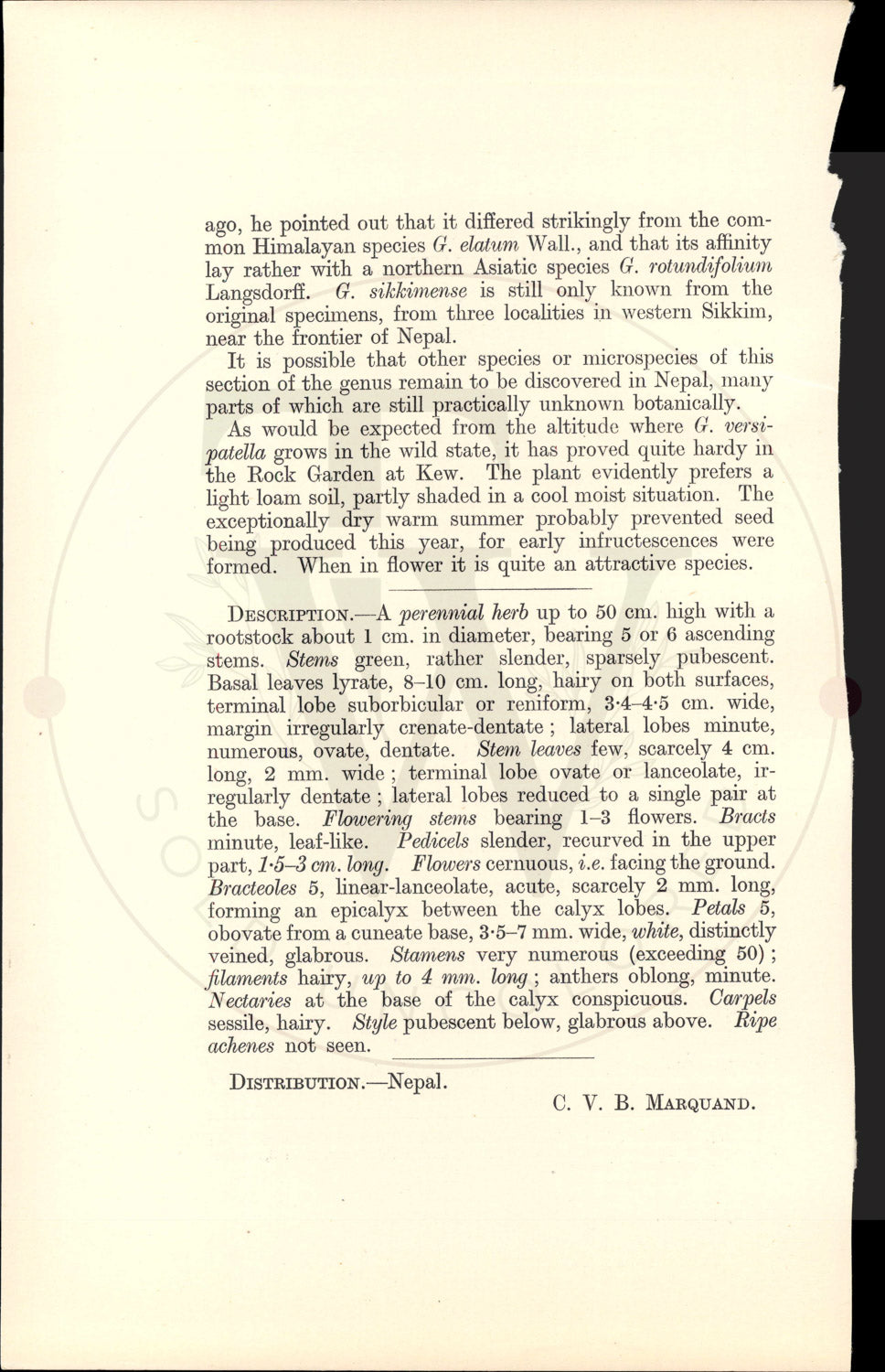Curtis Botanical Magazine
Plate 9344 - Geum versipatella
Plate 9344 - Geum versipatella
Couldn't load pickup availability
Curtis's Botanical Magazine - Plate 9344
Geum versipatella
Family: Nepal • Native Region: Nepal • Publication Date: January 1st, 1934
Distribution: Asia Minor; Turkey-in-Asia. • Tab Author: W. B. TURRILL.
Botanical Description
The plant from which the accompanying plate was drawn on June 2nd, 1930, was raised at Kew from seed obtained by Capt. Lall Dhwoj in Nepal and received through Mr. T. Hay in 1929. One plant which flowered in the Royal Botanic Gardens, Kew, in 1930, is alive at the time of writing, but it has never produced ripe achenes. The specific name was suggested by the late Dr. O. Stapf in reference to the flower, which, owing to the recurving of the upper part of the pedicel, faces downwards (as is also the case in e.g. Lilium Martagon), in which position it resembles an inverted plate. Unfortunately, however, Dr. Stapf did not prepare any notes or descriptions. No precise localities accompanied this batch of 63 packets of Nepalese seed, but it seems probable that the plant came from an altitude of 4500 metres in that country for two speci- mens of this species, collected by Capt. Lall Dhwoj, are in the British Museum Herbarium. They are labelled respec- tively "Michet 15,000 ft. (recd. 1929), Lall Dhwoj 78" and Tangba 14-15,000 ft. 1930, Lall Dhwoj 216." These localities are west and east of Katmandu in 28 degrees 30' N., 85 degrees E. and 27 degrees 30' N., 86 degrees 30' E. respectively. Nothing further is known about this interesting plant. It differs from its most closely allied species in the flowers being white instead of yellow, in the much longer pedicels and in having rather more numerous stamens with longer.
About This Print
Original black and white uncolored botanical print from Curtis's Botanical Magazine (established 1787). This 9000s series print is from unissued publisher stock, never hand-colored, representing the authentic plate as it appeared in the magazine. Edited by Sir Arthur William Hill for The Royal Horticultural Society, London.
Share







